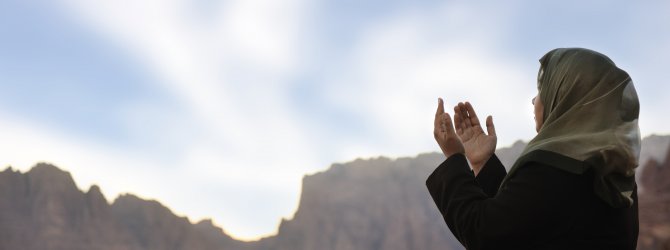-
Can Women Preachers Prevent Violent Extremism?
Can Women Preachers Prevent Violent Extremism?

The way in which Imams and religious leaders can help preventing violent extremism (PVE) is often discussed by academics, experts and policy-makers. Little is mentioned, however, on the role of women preachers (known as wa’ethat or murchidat in Arabic). This is not very constructive for PVE purposes, as much of women’s religious knowledge in Arab Muslim communities is transmitted and discussed by women preachers.
Excluding women preachers from PVE initiatives limits the effectiveness of these measures, because it undermines the agency of women in radicalisation and de-radicalisation. Above all, it ignores the impact women preachers have in influencing social change. Two facts highlight the urgency of assessing and empowering women preachers in PVE efforts.
First, statistics on fighters from the region are not gender segregated, and statistics on women joining Daesh, for example, mainly document cases from the West. However, there is anecdotal evidence that also women from the region have purposely joined violent extremist groups in Syria.
Second, the role of women in encouraging radicalism has also been documented. There are cases where mothers seem to have encouraged their sons to join violent extremist groups, and have convinced foreign fighters to return home.1 This pivotal role of women is linked to empirical evidence from the region and elsewhere that the immediate social network of individuals is single most important factor in the radicalisation process.
If radicalisation starts in homes, then PVE must start from there as well. Women preachers make the best entry point of radicalisation counter-narratives. They enjoy direct access to the private sphere of housewives, mothers, and other women groups that have limited public engagements. This is a domain that male Imams cannot access in the same way.
Women preachers in Arab societies include official employees in the Ministries of Awqaf (Islamic endowments) and Religious Affairs, as well as voluntary preachers. The latter can work on their individual initiatives, or belong to more centralised groups like the Qubaiseyyat in Jordan for example. These groups adhere to particular religious sects or philosophies and combine preaching with charity work. Volunteer preachers usually offer weekly sermons at private homes, while official employees hold meetings or study groups at mosques. Therefore, it is important to include both groups in the efforts to empower women preachers in PVE. Limiting these efforts to government employees will yield partial results. Both groups complement each other and together reach a wider segment of women in society.
The role of women preachers in PVE can be enhanced by initiating three parallel processes.
First, Ministries of Religious Affairs should recognise the urgent need to build the capacities of women preachers. A study conducted in Egypt found that women preachers are incapable of addressing radicalisation concerns as they lack the relevant knowledge and skills. Their audience relies on the media for information on radicalisation, terrorism, and Jihad.2 Meeting this skills shortage requires a partnership with Sharia colleges to introduce changes in educational curriculum and to offer continuous on-the-job training with respect to: the competing schools of Islamic political thought and ideologies, debate and mediation skills, and radicalisation drivers in the region. Experiences in the West and South East Asia show good progress in this regard, and the WANA region should build upon this.
Second, policy changes that seek to empower women preachers should include preachers from all religious ideologies. This will provide women from different religious groups (like Sufis, Ahbash, Ikhwan and even Salafis) qualified preachers who are able to address their radicalisation concerns and challenge radicalisation narratives. There is of course a risk that this can backlash if PVE efforts are perceived as an effort to impose a state-sanctioned form of spirituality in the private sphere. However, since radicalisation occurs across all religious groups, failing to include them entails an even bigger risk.
Third, women preachers limit themselves to ‘women issues’. Civil society actors and the media need to assert the wider social and religious responsibility of women preachers, who are also to be alerted that among their audiences are women struggling to bring fighters back or to convince relatives to renounce violent extremism.
This envisaged role of women preachers contributes to a wider process of amn al-fikri (thought/ideological security) that analysts are calling for in the region. This process seeks to reinforce Islamic values of tolerance and co-existence, and introduce richer public debates on human values in Islam to counter radicalisation narratives. This process in the public domain will remain alien if not paralleled with similar efforts in the sphere of women preachers, where radicalisation narratives can be challenged and counter-narratives reinforced within households and local communities.
1 Mustafa al-Sagezli, “Lessons from Libya CVE Efforts” (presentation, Expert Meeting on Radicalism and Violent Extremism, Ankara, Turkey, March 1-2, 2016).
2 Ameera Ali, “Evaluating the Role of Ministry of Awqaf Female Preachers in Awareness Raising on the Dangers of Terrorism and in Countering Terrorism (in Arabic)” (presentation, Second International Conference on Countering Terrorism, Madinah Munawarah, Saudi Arabia, April 22-23, 2014), 359-340.

